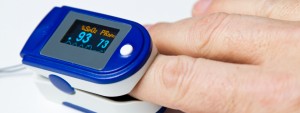 Darker skinned patients may be missing out on appropriate treatment because pulse oximeters are not calibrated to adjust for differences in skin tone, researchers say.
Darker skinned patients may be missing out on appropriate treatment because pulse oximeters are not calibrated to adjust for differences in skin tone, researchers say.
The warning follows a study of more than 7,000 patients in the United States, which found the devices overestimated oxygen levels by an average of 1.7% in Asian patients and 1.2% in African Americans.
As a result, pulse oximetry failed to identify hypoxaemia in 3.7% of samples from the two groups, based on readings collected during routine clinical care at five hospitals within the Johns Hopkins Health System.
Occult hypoxaemia occurred in some 1.7% of samples from white patients, the researchers found.
All up, some 30% of Asian patients, 29% of African American patients and 17% of white patients had at least one occult hypoxic reading during their hospital stay.
This was defined as SaO2<88% with concurrent SpO2 of 92%–96% from an arterial oxygen saturation measurement taken 10 minutes later with a blood gas analyser.
The oxygen measurement issues were associated with “systematic misclassification of patient oxygenation status based on racial or ethnic self-identification,” they wrote in JAMA Internal Medicine.
“In addition, we found a systematic failure to identify Black and Hispanic patients who were likely qualified to receive COVID-19 therapy and a statistically significant delay in recognising the guideline recommended threshold for initiation of therapy among Black patients compared with White patients.”
The findings may go some way towards explaining the disproportionate virus mortality rate among African Americans, who the US Centers for Disease Control and Prevention had found were 1.7 times more likely to die from COVID-19 than white patients, the researchers added.
Oximeter readings on white patients were far from perfect either, even given allowances for the 10 minutes between paired SpO2 and SaO2 measurements.